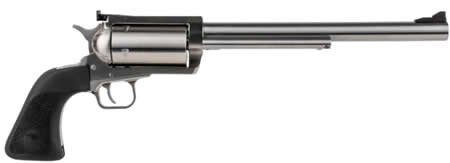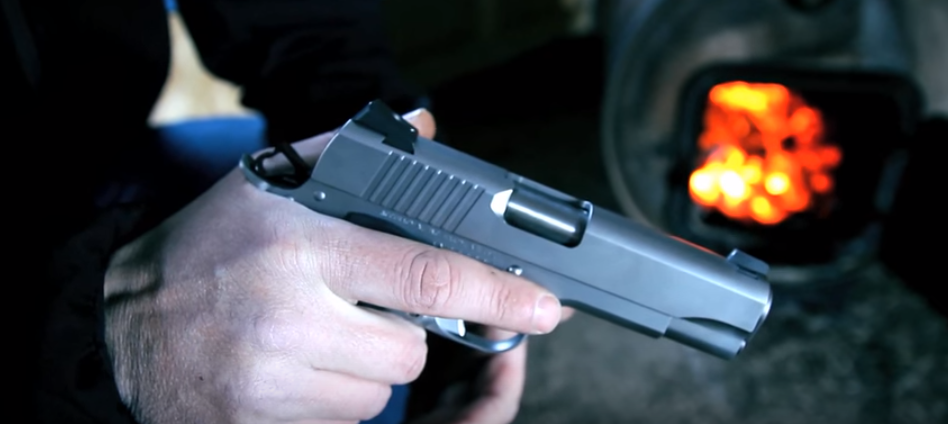What Animals Can You Hunt with a Handgun
Depending on the state you live in, you can legally hunt most non-migratory birds and mid to
large-sized animals. Believe it or not, a hunter can target animals as large as bears and elks,
utilizing modified, modern handguns.

Although there are a few consistent regulations about hunting with fully automatic rifles and
hunting white-tailed deer using rimfire cartridge rifles, the list of animals you can go after with
your pistol is wide open. You can utilize your handgun for hunting them all, from hogs to deer,
rabbits, squirrels, turkeys, and boars.
While many avid hunters prefer long guns with long-distance optic systems or an AR15 with an
upper receiver built to handle larger chambered ammunition, there are just as many that prefer
hunting with a pistol. In most cases, the question is not can you hunt with a handgun rather than
do you want to hunt with a pistol.
Several things make hunting with a pistol probably one of the most exciting hunting you’ll ever
experience. However, there are a few limitations and requirements you’ll need to understand
before you choose to drag your 9mm along for a hunting trip.
Practice, Practice and Practice Some More
One thing you need to understand when hunting with a pistol is that placement on your target
must be precise enough to ensure an ethical shot that brings down the animal and dispatches it
quickly. To do this, you need to spend more time at the range practicing with your first shot and
follow-up shot groupings.
You need to understand where the kill-shot area on the game you’re hunting is, and then practice
hitting that spot on your target at the range over and over until acquisition of the target and
placement of the first or follow-up shot is intuitive.

Remember that the primary goal is to mirror the exact shot placement you get when firing your
rifle during your practice sessions. If you’re a crack shot with your AR15, you’ll need to match
those same shots with your pistol.
As with all live-fire range practice, it will take several trips to the range before it begins to click,
and you’re able to hit the sweet spot as expected consistently.
Remember, just as you practice at the range to better condition your reaction times and accurate
shot placements in the event of a dynamic home defense situation, you’ll need to perform the
same continuous practice if you decide to hunt with a pistol.
Stalking and Short Range
Using a pistol to hunt requires a lot of patience. It typically results in tracking and stalking your
prey as silently as possible to minimize the distance between you and your target to around thirty
or fifty yards.
Stalking your game is the exciting part and, in the beginning, probably the most frustrating part
until you learn the art of adequately tracking the animal to snap off that close-range shot. While
shooting at shorter ranges is much like bow hunting, hunting with your pistol requires additional
accuracy and marksmanship skills that many in the hunting community don’t have.
Some revolvers even allow you to mount long eye relief scopes for more accuracy.

One of the most exciting features about stalking your prey and hunting at closer ranges is that
you’re reverting to a tried-and-true hunting method used by our ancestors for hundreds of years.
Nothing has changed much since our ancestors hunted, except instead of arrows and spears,
you’re using a handgun loaded with a higher caliber pistol.
The Right Pistol Makes All the Difference
While the consistent train of thought is that any pistol will do, there are a few pistol types and
bullet calibers to consider before you head into the deep woods for a few days of deer hunting.
If you’re new to the exciting world of handgun hunting, a single-shot or break-action pistol even
firing .357 magnum, or a .44 caliber bullet may not be the pistol you’ll want to start with on your
pistol hunting journey.
Single Action Pistol
For the first few trips of pistol hunting using a break-action, single-shot pistol means you’re aim
needs to be practiced enough for a one-shot-one-kill shot. In the beginning, a break-action may
need to stay off your purchase list for a bit. You can advance to using either a single action or
double action pistol, and one may prove to be better than the other for the beginner.
When hunting with a single-action handgun, you’ll need to pull back the hammer before taking
the shot. From a safety perspective, you shouldn’t pull the hammer of your single-action pistol
back until ready to take that shot, as an accidental misfire may happen during your stalking
session.
The primary benefit of using a single-action handgun is that the trigger pull is exceptionally
light, and you won’t need to exert much force to get the shot off which improves accuracy.
You more than likely have realized by now that using a single-action pistol is almost like using a
single-shot break action. After the shot, you must pull the hammer back to load again, settle
yourself, and fire.
If you missed entirely, it’s a safe bet the game you’ve been stalking for hours isn’t going to wait
around until you have a chance to reload. If the shot was a poor one, the animal might bolt, and it
will take hours, if not days, for the animal to bleed out.
Double Action or Semi-Automatic Pistol
Typically, most pistol hunters prefer using a double-action or semi-automatic pistol on their
hunting trips. Shooting with a double-action pistol requires a single pull of the trigger, which
draws back the hammer and firing pin then releases it to strike the cartridge, which fires the
round.
Using a semi-automatic requires the hunter to chamber the round by pulling the slide back the
first time, and then the pistol does all the work of chambering the round and performing the
firing sequence.
Hunting with either handgun usually accommodates most of the hunting scenarios a pistol-hunter
will experience.
Practical Pistol Hunting
As mentioned earlier, there are very few animals you can’t hunt with a pistol. From larger game
such as elk, deer, and even bears, to smaller game such as non-migratory birds, turkeys,
squirrels, and rabbits, can all be hunted with a pistol.
There are a few common-sense approaches you need to apply when pistol hunting, and they
usually depend on the ballistic caliber of the ammunition you use.
Hunting deer such as whitetail with a .22 caliber pistol is not only illegal in many states, but it’s
not ethical. It also may require emptying the magazine to bring the animal down eventually.
Hunting small game such as rabbits with high-powered terminal velocity ammunition is indeed
an overkill situation that may render the carcass unusable. To sum it up, with a lot of practice and
picking the proper caliber ammunition for the animal you intend to hunt, you’ll end up
experiencing many years of exciting and exciting, and joyful hunting experiences.





